SEO For Restaurants: 13 Actionable Tips to Book More Tables

When you buy something through one of the links on our site, we may earn an affiliate commission.
Welcome to my blog on SEO for restaurants!
Let's lay some facts on the table:
Almost all of us - a whopping 97% - find new places to eat by looking online first. Not to mention, nearly half of all Google searches are people hunting for local spots.
These numbers spell it out: If you want to get customers to come to your restaurant, you need to stand out on the internet.
How do you do that? One clear answer is to embrace SEO for restaurants, otherwise known as Search Engine Optimization.
Let's dive into it.
Contents
- Demystifying SEO For Restaurants: The What and Why
- 1. Map Relevant Keywords
- 2. Craft SEO Content (Keep it Local)
- 3. Optimize Your Menu: The Core of Your Restaurant Website
- 4. Location, Hours of Operation, and Booking Options
- 5. Cuisine-specific Content
- 6. Chef or Owner Profiles
- 7. Build Citations and Local Listings
- 8. Tips For Encouraging Customers to Leave Reviews
- 9. Claim Your Google My Business Listing
- 10. Optimize Your Google Business Profile
- 11. Build High-Quality Backlinks
- 12. Go User-Friendly
- 13. CTA's
- SEO For Restaurants - Final Thoughts
- Frequently Asked Questions about SEO For Restaurants
Demystifying SEO For Restaurants: The What and Why

SEO is about juicing up your website and its content to rise to the top of search engine rankings on platforms like Google, Bing, or Yahoo.
Picture this: someone's searching for a grub spot near them or a specific dish.
What's your ultimate goal? It's pretty straightforward - you want your restaurant to be the first thing that pops up in their search results (and so having a great restaurant name helps).
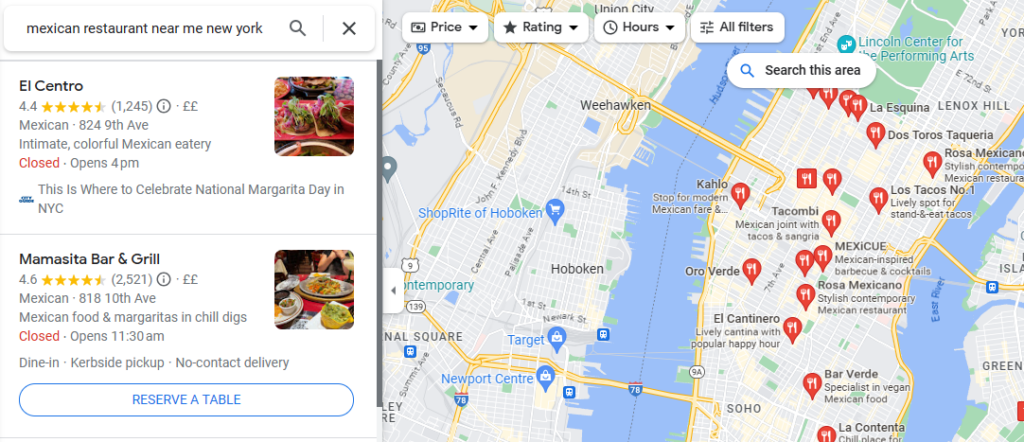
At this point, you might be thinking: how do I improve my restaurant's SEO?
1. Map Relevant Keywords

When it comes to SEO for restaurants, it all begins with mapping out relevant keywords.
Think about your menu, location, ambiance, and other unique factors that set your restaurant apart from the crowd.
You want to pick keywords that reflect your restaurant but also ones that have enough search volume to bring traffic to your website.
Here's a keyword research guide to find low competition keywords.
Say you own a Mexican restaurant in New York City with a rooftop bar (using one of these Mexican restaurant name ideas); your star keywords might be "Mexican food NYC," "rooftop bar," "margaritas," and "outdoor dining.
To find these keywords, I personally go for keyword research tools like SEMrush.
SEMrush provides detailed information on organic traffic potential for different keyword phrases, including where they rank on Google's search engine results pages (SERPs), which competitors are using these same terms, etc.
2. Craft SEO Content (Keep it Local)
For restaurant owners, local SEO is critical. Consider this: Google has seen "near me" searches explode by over 136% yearly.
Search engines are smart. They track the searcher's location and prioritize the most relevant results.
So, what's the winning formula for local SEO content?
Here it is:
- Craft content that's specific to your location.
- In this content, fine-tune title tags, meta descriptions, and header tags with location-specific keywords.
Ready to apply this to your website? Let's look at some areas where you can implement these strategies.
3. Optimize Your Menu: The Core of Your Restaurant Website
Your restaurant's menu isn't just a lineup of food and drinks - it reflects your brand, a testament to your culinary flair, and a promise of quality.
Ensure your website displays a current menu, highlighting your crowd-favorite dishes and beverages. Including clear pricing info is key because customers appreciate knowing what they're in for before stepping into your place.
4. Location, Hours of Operation, and Booking Options
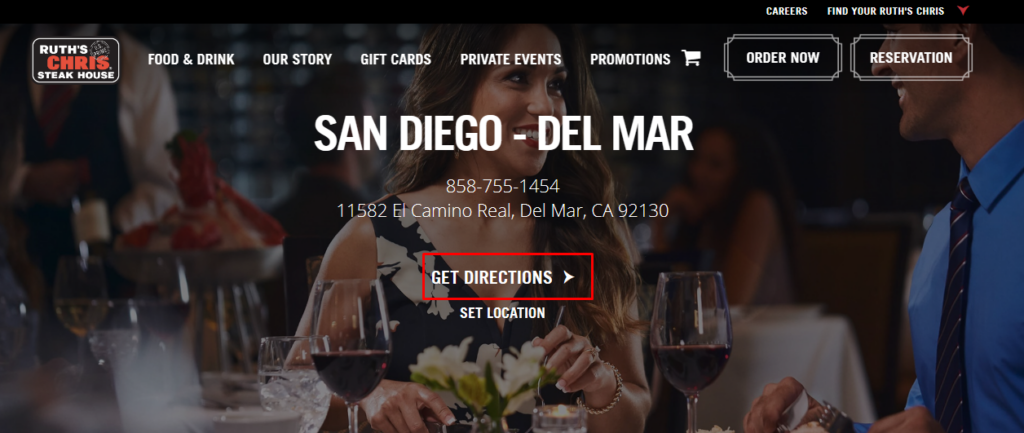
Your address should stand out on the homepage or contact page. Also, how about adding a map with directions for an easy route to your place?
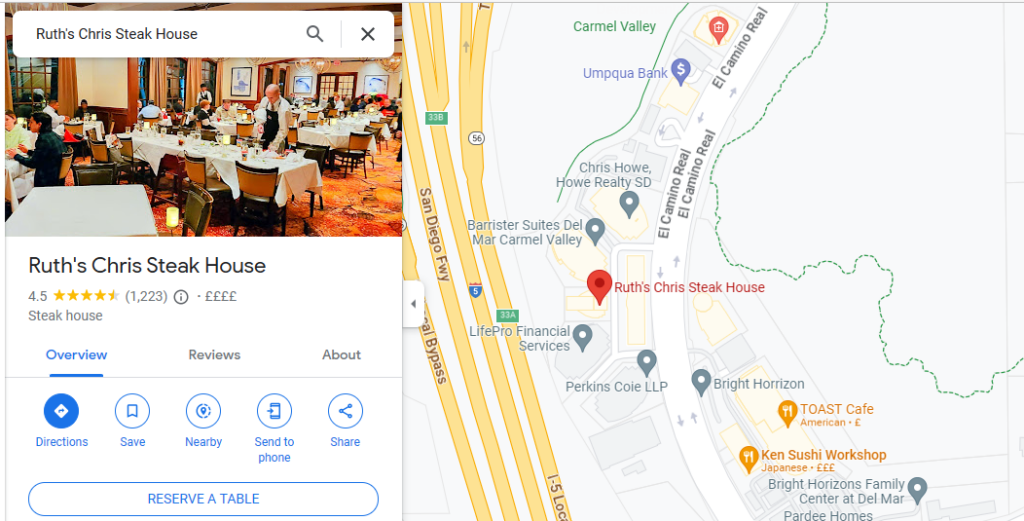
Got a potential customer with a question or worry? Make sure they can reach you easily - display contact info like a phone number and email address.
And here's a thought: offer online reservations. This can save customers time and make booking a table more convenient - especially during busy times.
In the digital age, it's also worth considering the addition of a chatbot to your website. A chatbot can respond instantly to common queries, guide customers through the reservation process, and even handle simple complaints.
5. Cuisine-specific Content

Got a signature cuisine at your restaurant? Make some noise about it in your content. Showcase those standout dishes and one-of-a-kind creations that define your culinary style.
Say you run a vegan restaurant. Why not highlight meals whipped up with locally grown, fresh ingredients? Share blog posts or videos about the journey of these ingredients - where they come from and the farmers you partner alongside.
You could also share stories about why these ingredients are unique to your area and how they enhance the flavors of your dishes.
6. Chef or Owner Profiles

Customers who know the masterminds behind their meals form a stronger bond with the food and the restaurant. So, why not introduce your chefs or owners with profiles that underline their backstory, experience, and vision for the place?
You can share these profiles on social media or your restaurant's website. Showcasing these folks' skills and food passion does more than promote your restaurant. It proves that your place is not just a business - it's a personal canvas for culinary creativity.
7. Build Citations and Local Listings
Citations are online references to your business's name, address, and phone number (NAP) on other websites.
On the other hand, local listings are your business's detailed profiles on directories and review sites. They give potential customers a full picture of what you offer.
Both are important for local SEO because they signal to search engines that your business is legitimate and credible.
Top Citation Sources
There are many citation sources out there, but not all of them are created equal.
Here are some of the top citation sources you should focus on:
- Yelp
- Yellowpages
- Google My Business
- Bing Places for Business
- Foursquare
- Apple Maps Connect
- Manta
- Citysearch
These have high domain authority and are trusted by search engines, so having a citation on these sites can help boost your business's credibility.
Keep your restaurant's info up-to-date, add drool-worthy pictures of your dishes, and encourage your customers to leave reviews.
Remember, how you respond to reviews, good or bad, speaks volumes about your restaurant.
8. Tips For Encouraging Customers to Leave Reviews

Got the gist of how key customer reviews are in SEO for restaurants? Let's dive into how to score more of them.
- Just ask - One of the simplest ways to rack up more reviews is to ask your customers straight up. You could add a call-to-action in your email signature or on your website inviting satisfied customers to leave a review.
- Make it simple - The simpler you make it for customers to leave a review, the more likely they are to do it. Give clear steps on where and how to drop a review (like, "Click here to review us on Yelp"). I once dined at a restaurant where the waiter handed me a QR code on the spot - it was so simple I couldn't resist!
- Sweeten the deal - While you can't pay people for reviews, you can dangle incentives like discounts or free stuff for their next visit.
- Respond quickly and graciously - Whenever a review pops up, good or bad, get back to it ASAP and thank the reviewer for their time and thoughts. It shows you genuinely care about your customers and their feedback.
9. Claim Your Google My Business Listing
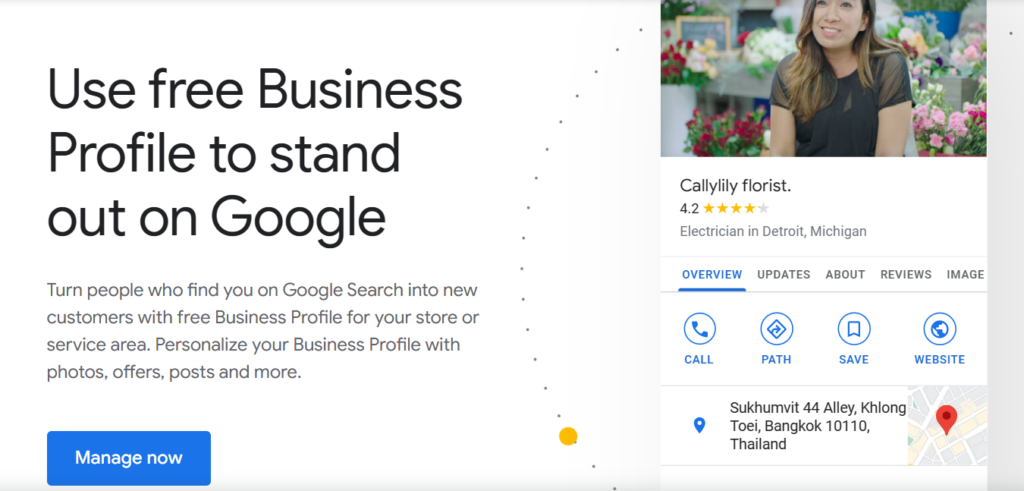
Here's a big one: stake your claim on your Google My Business (GMB).
This way, when customers are on the hunt for a restaurant like yours in their area, they'll find spot-on info that guides them to your doorstep.
Step-by-Step Instructions on How to Claim Your Listing
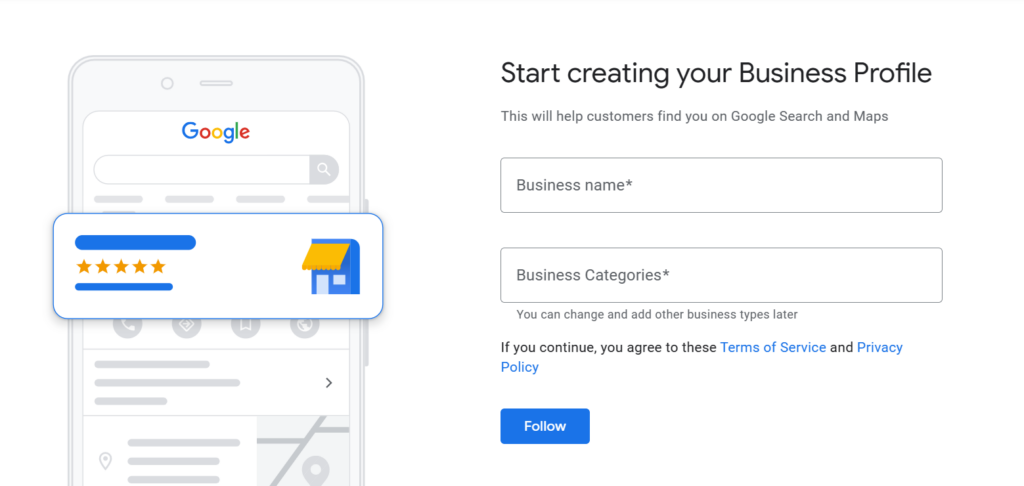
To claim your GMB listing, follow these simple steps:
- Go to Google My Business and click the "Start Now" button.
- Log in to the Google account associated with your business or create a new one.
- Enter the name of your business and select a category that best describes what you do.
- Enter your business address or service area if you don't have a physical location.
- Add a phone number and website URL for your business.
- Verify your listing by mail, phone, email, or instant verification if available.
It's important to note that you must have a physical location or provide services in person to claim a GMB listing.
10. Optimize Your Google Business Profile
Have you ever thought about why it's vital to get your Google My Business (GMB) listing right? Well, it’s your golden ticket to appear in Google Maps and local search results, which is more essential now than ever.
Want a bit more insight on that? Read more on how to improve your Google Maps ranking.
But let's not stop there. To truly harness the power of GMB, you need to ensure every element of your profile is on point:
- Business Name: Ensure that your business name accurately reflects the name of your business as it's known locally. Avoid using irrelevant keywords or taglines.
- Address: Make sure that your address is accurate down to the suite or unit number.
- Phone Number: Provide only one phone number for your business, and make sure it's local. Avoid using toll-free numbers or numbers with different area codes than where your business is located.
- Hours: Update your hours regularly if they change seasonally or due to holidays.
- Categories: Use specific categories rather than broad ones (e.g., "Mexican restaurant" instead of "restaurant").
Wondering why all this fuss about GMB? Let's look at some real-world evidence. @DataChazGPT recently tweeted a fascinating snapshot of Google search results in 2023.
There were seven Google Maps listings taking the lead before the top organic SEO search result even made an appearance!
Take a moment to absorb that. SEVEN map listings before the top SEO spot. That, my friends, is the power of a well-optimized GMB profile. So, get on it and see your local search presence soar!
11. Build High-Quality Backlinks
Want to give your restaurant website a credibility boost? Then, it's time to build backlinks.
You may be wondering, "What on earth are backlinks?" They're like a thumbs-up from other websites - a clear sign that they trust and value your content.
Imagine this: a highly respected site links to your little corner of the web. Search engines like Google see this and think, "Hey, this must be a great site!"
And just like that, your website becomes a hot favorite in the search rankings.
How do you go about building these backlinks?
- Find Your Allies: Identify websites that align with your restaurant's niche and have solid domain authority. These are your potential allies in the quest for higher search rankings. Think food bloggers, local news outlets, local business associations, suppliers' websites, and lifestyle brands.
- Cook Up Irresistible Content: Your website should be a treasure trove of high-quality content that others can't resist linking to (or sharing). Be it tempting blog posts, behind-the-scenes videos, or infographics detailing the journey of farm-to-table ingredients, make it link-worthy.
- Reach Out: With your list of potential allies and irresistible content ready, it's time to make contact. Send a friendly email or social media message to the website owner, introducing your fantastic content that their readers might find interesting.
- Guest Posting/Collaboration: Watch for opportunities to add value in exchange for a backlink to your site. Collaborating with other businesses could involve co-hosting events or promotions that put both your brands in the spotlight.
Here's a descriptive guide on how to get the backlinks that your competitors have.
But remember, quality over quantity is the name of the game.
12. Go User-Friendly
Think of your website as your restaurant's virtual front door. You want it to be welcoming, right? It should be sleek, modern, and easy to navigate, just like your physical space.
Start by revisiting your current website layout. Choose a responsive design that adjusts to look good on any device. Using larger fonts and straightforward navigation menus makes your site user-friendly for mobile visitors.
Also, pay close attention to the load times of your images and videos. According to Google, more than half of mobile users will abandon a page that takes more than 3 seconds to load.
In a world where over 50% of web traffic comes from mobile, a potential customer is lost for every second wasted!
One way to speed things up is to give each image a descriptive file name that matches its content instead of something generic like "IMG_001" or "screenshot." This helps your site load faster and lets search engines understand your website's content.
13. CTA's
Lastly, provide clear calls-to-action (CTAs) on every page.
CTAs can be anything from a "book now" button to a "view our menu" link that directs users to relevant information. Creating a seamless user experience on your site increases the likelihood that potential customers will take action and visit your restaurant.
SEO For Restaurants - Final Thoughts
In the bustling digital world, SEO for restaurants is your secret recipe to stand out. It's not just about visibility but about creating an enticing online experience that mirrors the unique appeal of your restaurant.
Remember, SEO is a journey, not a sprint, and every small step contributes to your long-term success.
So, consider this: How can you use SEO to bring the unique flavors of your restaurant to the digital forefront, and how will you ensure they reach as many potential customers as possible?
Frequently Asked Questions about SEO For Restaurants
Here are some FAQs about SEO for restaurants.
What are some common restaurant SEO mistakes to avoid?
Some common restaurant SEO mistakes to avoid include:
- Using duplicate content.
- Stuffing keywords.
- Ignoring mobile optimization.
- Neglecting local SEO.
- Failing to track your website's performance.
How long does it take for restaurant SEO efforts to show results?
The amount of time it takes to see results from restaurant SEO efforts varies based on several factors, such as your website's current level of optimization, your competition, and the keywords you're targeting.
Generally, it can take several months to see noticeable improvements in search engine rankings and website traffic. However, consistent and ongoing SEO efforts can lead to long-term success.
Want to learn step-by-step how I built my Niche Site Empire up to a full-time income?
Yes! I Love to Learn
Learn How I Built My Niche Site Empire to a Full-time Income
- How to Pick the Right Keywords at the START, and avoid the losers
- How to Scale and Outsource 90% of the Work, Allowing Your Empire to GROW Without You
- How to Build a Site That Gets REAL TRAFFIC FROM GOOGLE (every. single. day.)
- Subscribe to the Niche Pursuits Newsletter delivered with value 3X per week
My top recommendations

















